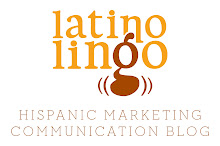The hype about the importance of the Hispanic vote
became a reality during the 2012 elections, where Hispanics were 10 percent of
the overall voting block and significantly more in key swing states like
Florida, Colorado and Nevada. Latinos voted for President
Barak Obama 71 to 27, a gap of 44 percentage points – larger than the 36 point
gap the president had over John McCain in the last election.
While there is understandable attention being given to
this important voting bloc on the heels of the election, the results of the
election should serve as a wake up that this demographic will be influential for
the long term – both at the ballot box and at the cash register.
And, the clock is ticking as by 2042, Whites will be the
minority in the United States, according to the Pew Hispanic Center.
The
influence is also not limited to population growth. Economically, Latinos account for more than
$1.3 trillion in economic purchasing power, according to the Selig Center for
Economic Growth. In terms of industries,
Hispanics are expected to account for 40 percent of the net new households in
the next 10 years, Hispanics spend more at supermarkets, outpace non-Hispanics
on smart phone and table purchases and Spanish-language TV networks
consistently outperform English-language ones among key demographics. Add to this the fact that Hispanic-owned
businesses grew 43.7 percent compared to the national rate increase of 18
percent and that Hispanics are now largest minority group among U.S. 4-year university
students, the case for Hispanics’ long-term economic importance begins to take
shape.
The market is there and the numbers are compelling, but many companies continue to put Hispanic marketing on the back burner, say they don't have a budget to do Hispanic marketing or think they are already reaching Hispanics through their English-language campaigns.
Let me be clear. There is a major difference between reaching Hispanics and connecting with Hispanics. Connecting with
Hispanics requires a credible and culturally-relevant approach. Trusting relationships must be established
and cultivated, and approaches cannot focus solely on language. Hispanics see
straight through lackluster efforts such as translations, asking for our vote
the last two weeks before an election or remembering us only during Hispanic
Heritage Month.
The key is in transcreating rather than translating. Transcreation is the
cultural-adaptation of marketing and sales messages to reach Hispanics in a
language they understand both literally and metaphorically. Transcreation focuses on what motivates
Hispanics to purchase or consume goods and services rather than on whether they
speak Spanish or English. In other words, knowledge of how culture influences a
Hispanic’s decisions is more important than language preference.
Success also requires adequately allocating budgets to reach this important
segment. The Hispanic market must be integrated into an overall market strategy
and not treated just as a niche market. There
are no easy short cuts.
Now is the time to begin.
Labels: budget allocation, Census, Hispanic marketing, Hispanic media, Hispanic purchasing power, Latino Cultural Identity, Pew Hispanic Center, Selig Center for Economic Growth, transcreation




